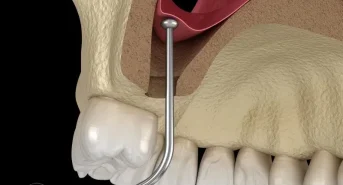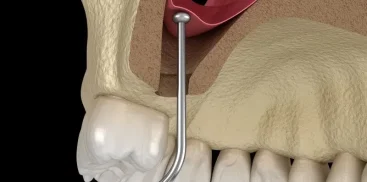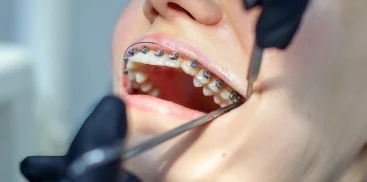Even with regular care of our teeth, sometimes tooth reconstruction is necessary.
This may be caused by damage to the tooth crown caused by caries or mechanical injuries.
There are several popular restoration methods, such as composite, ceramic and fiberglass restorations.
But what are the differences between them and which method should you choose?
What is tooth restoration?
Tooth reconstruction is necessary when the tooth crown is significantly damaged.
This allows the tooth to remain in the mouth and restores its normal biting functions.
Tooth reconstruction also has a positive effect on the aesthetics of our smile.
Indications for tooth reconstruction
The most common reasons for tooth reconstruction are:
- Mechanical damage, such as chipping or breaking a tooth.
- The need to strengthen the tooth crown.
- Endodontic (root canal) treatment of a tooth due to advanced caries.
- Improving the aesthetics of your smile by hiding unevenness, wrinkles and discolorations.
Tooth reconstruction is usually recommended when it is no longer possible to fill the tooth with a filling, or when such a procedure will significantly improve the appearance of the tooth.
Tooth reconstruction methods
In today’s dentistry, there are many different methods of tooth restoration, and the choice depends on the degree of tooth damage, the general condition of the oral cavity and the patient’s budget.
Tooth reconstruction with composite:
This technique, also called “bonding”, is used in the case of small cavities with superficial damage to the tooth, without advanced carious lesions.
Composite is a special resin that is flexible and allows for quick, inexpensive and comfortable tooth reconstruction.
This procedure can usually be performed in one visit to the dentist.
Tooth reconstruction on fiberglass:
Fiberglass is one of the most durable materials used to rebuild teeth, especially front teeth, to strengthen the crown and protect it from breaking.
Fiberglass is also used to reconstruct a tooth after root canal treatment or in cases of sudden tooth damage
nothing.
This material does not require special preparation of adjacent teeth.
Tooth reconstruction on the root:
In case of serious damage to the tooth crown, root reconstruction is used if the root remains healthy.
This can be done in two ways:
- Using a crown-root post, which is placed in the tooth root and on which the crown is placed.
- Placing the crown on a polished, natural tooth crown if the damage is minor.
Root canal treatment:
After root canal (endodontic) treatment, teeth often require reconstruction.
This can be done using a variety of methods, including light-cured materials, dental crowns or dental bridges.
Prosthetic crown:
A prosthetic crown is used when a tooth has lost its crown or needs root strengthening.
This is a frequently used method of tooth reconstruction, especially if the root is healthy.
The crown can be made of various materials, such as ceramic, especially if the tooth is non-vital.
Benefits of tooth restoration:
It allows you to keep the tooth in the mouth, avoiding its extraction, which helps maintain proper bite and aesthetics of the smile.
Increases the stiffness and mechanical strength of teeth.
- It is not worth delaying a visit to the dentist in case of dental problems.
- The sooner the patient undergoes treatment, the greater the chance of retaining at least part of his natural teeth.
Tooth reconstruction cost:
The cost of tooth reconstruction depends on many factors, including the degree of damage to the tooth and the method chosen.
The Warsaw Dental Center, a dental clinic in Warsaw, offers various methods of tooth reconstruction, and prices are adjusted to the needs of each patient.
Before starting treatment, the dentist presents a treatment plan and costs, which in some cases can be paid in installments.










